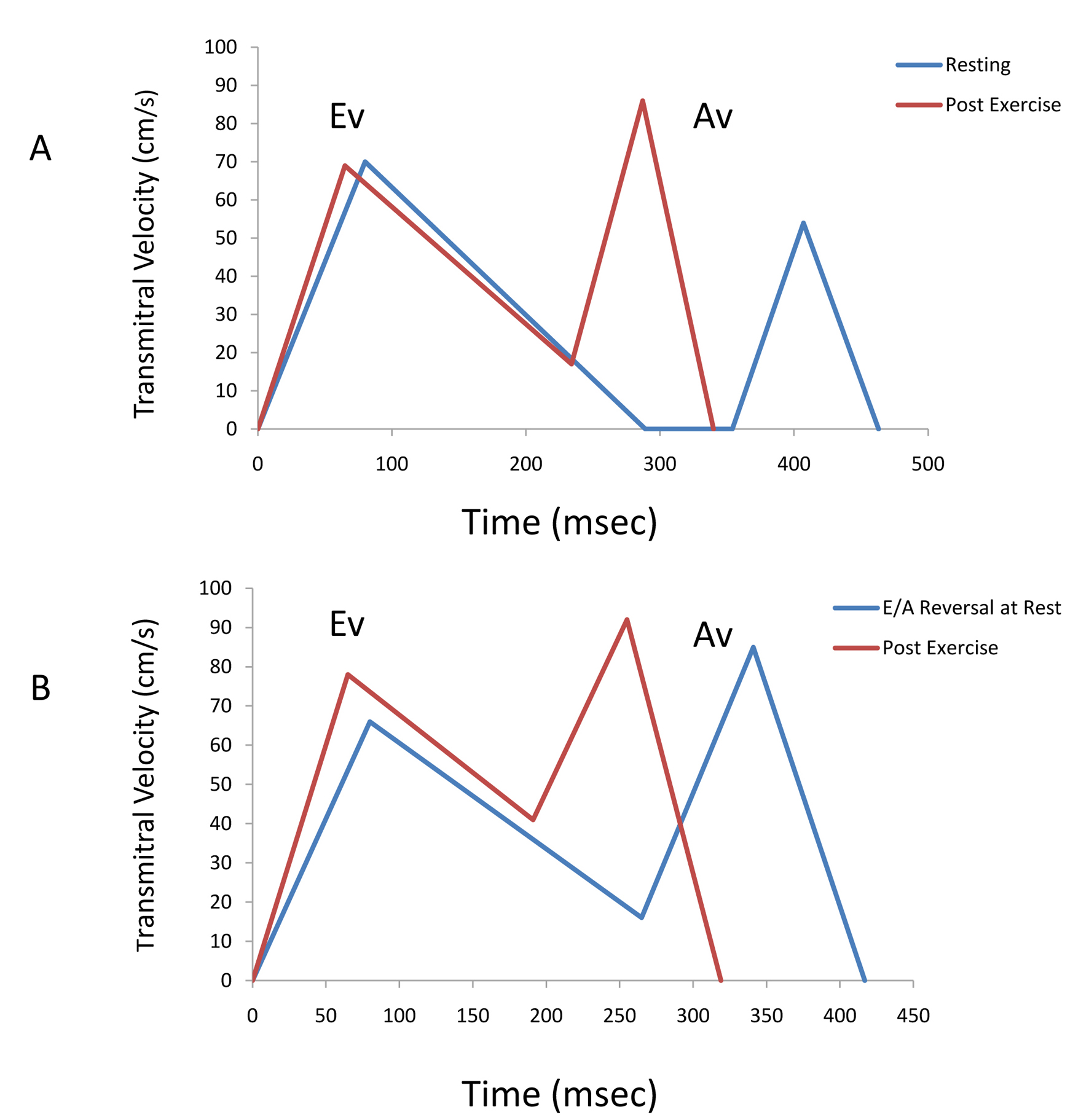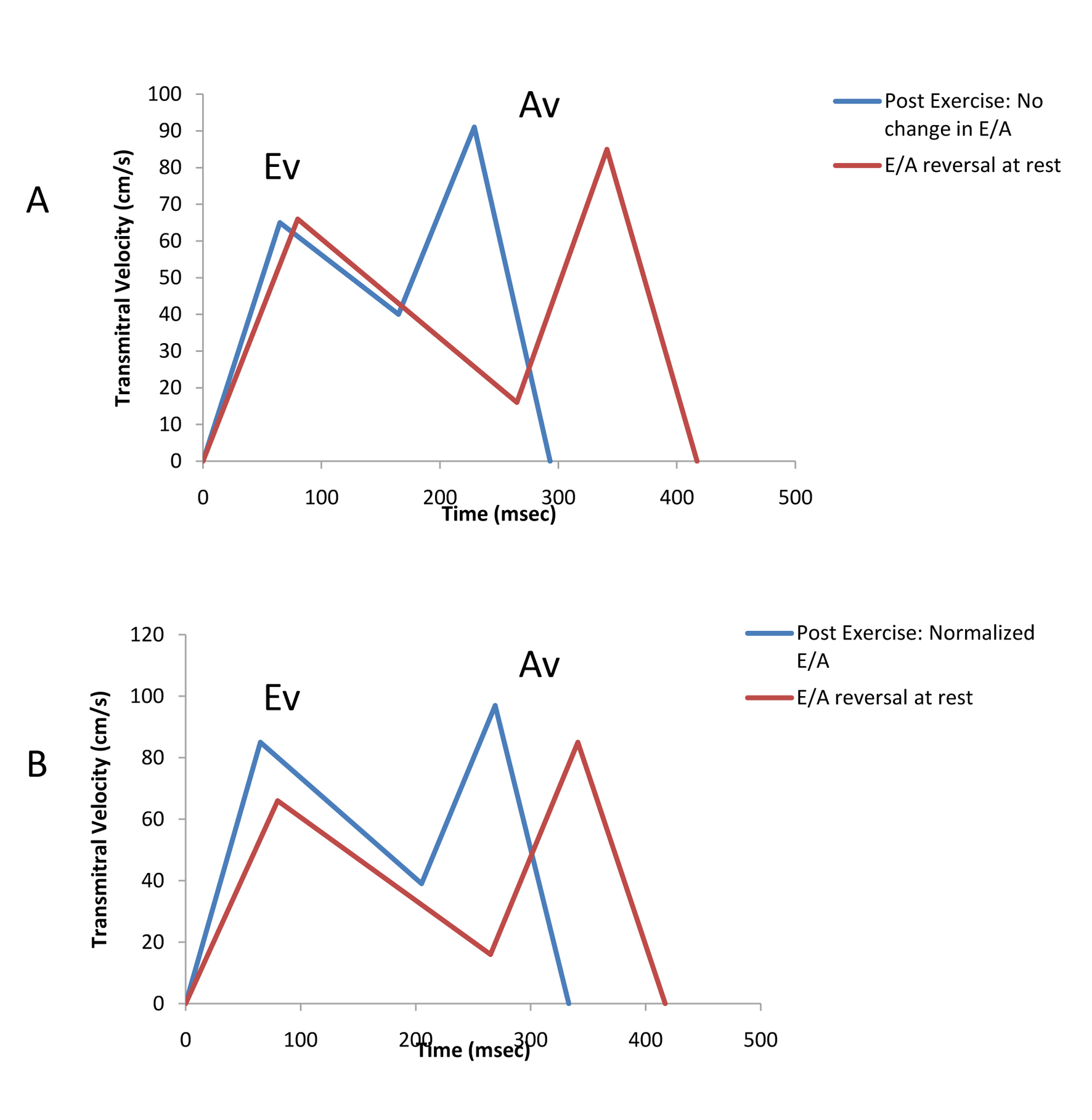
Figure 1. (A) A composite average transmitral flow in patients with normal diastolic filling is plotted against time both at rest and post exercise. Post exercise, there is an increased atrial filling velocity and atrial filling velocity. (B) A composite average transmitral flow in patients with E/A reversal at rest (impaired diastolic filling) is plotted against time both at rest and post exercise. Post exercise, there is an increased rapid filling velocity only and the the mean E/A remains < 1. Ev = Peak rapid filling velocity; Av = Peak atrial filling velocity.
